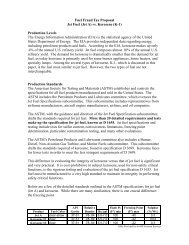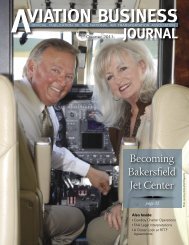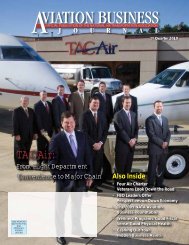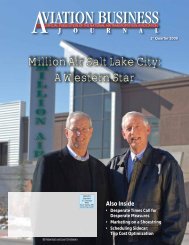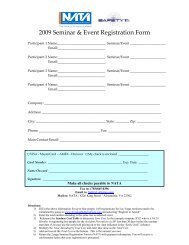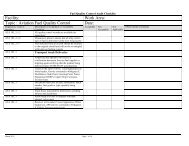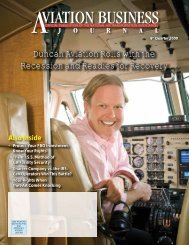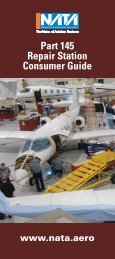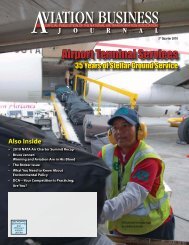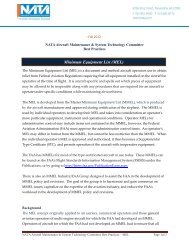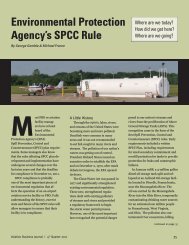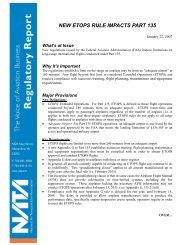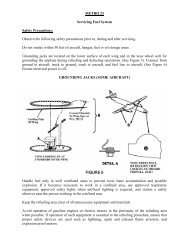Computer-Based Maintenance Tracking Flight Training ... - NATA
Computer-Based Maintenance Tracking Flight Training ... - NATA
Computer-Based Maintenance Tracking Flight Training ... - NATA
- No tags were found...
You also want an ePaper? Increase the reach of your titles
YUMPU automatically turns print PDFs into web optimized ePapers that Google loves.
Examining All Sidesof Air Charter SafetyBy Lindsey McFarrenThis edition of the Aviation Business Journalis largely focused on air charter safety. Todiscuss the topic appropriately, readersmust understand the makeup of the industry,including the number of operators,fleet sizes and types, and activity types.The Industry: View from FL 300The air charter industry is composed of Part 135certificate holders, 91(K) authorized fractional ownershipmanagers, and Part 91 management companies.Not to be forgotten are brokers, customers,vendors (insurance companies, maintenance facilities,attorneys, FBOs, airports, and others), governmentagencies, and the media. Yes, the media isan important, though often forgotten until disasterhits, component of the air charter industry.Active Part 135 certificates nationwide numberedaround 2,347 as of May 30. (“Active” Part 135 certificateshave current Operations Specifications [Op-Specs] issued.) Of these, 22 operators have joint Part121 and 135 certificates, nine have both Part 135certificates and 91(K) authorizations, and two haveonly 91(K) authorization and no Part 135 certificate.Combined, these operators fly more than 11,200 aircraft.However, anyone familiar with the industryknows Part 135 numbers—whether certificates held,OpSpecs issued, or aircraft on those OpSpecs—areconstantly in flux, so these data are to be taken witha grain of salt.More than half of the 2,347 certificate holdersoperate two or fewer aircraft. Although large operatorshave significant visibility, only a very smallpercentage of charter operators have more than tenaircraft on their OpSpecs. In fact, on a list of the 100“largest” Part 135 certificate holder fleets, four is themagic number. That’s right—if you have 4 or moreaircraft on your OpSpecs, you’re one of the bigguys!Approximately 35 percent of all aircraft used inPart 135 operations are piston-powered airplanes.Turboprop airplanes make up 17 percent, and jetairplanes conduct 26 percent of Part 135 operations.The remaining Part 135 operations, about 23percent, are performed in rotorcraft.In 2006, on-demand (also referred to as nonscheduled)Part 135 air carriers had just 54 accidents,down almost 20 percent from previous years.Ten of these were fatal, accounting for a total of16 fatalities and a fatality rate of only .28 fatalitiesper 100,000 hours flown. The overall accident ratefor on-demand Part 135 operations was 1.50 perContinued on page 20Aviation Business Journal | 3 rd Quarter 200719


